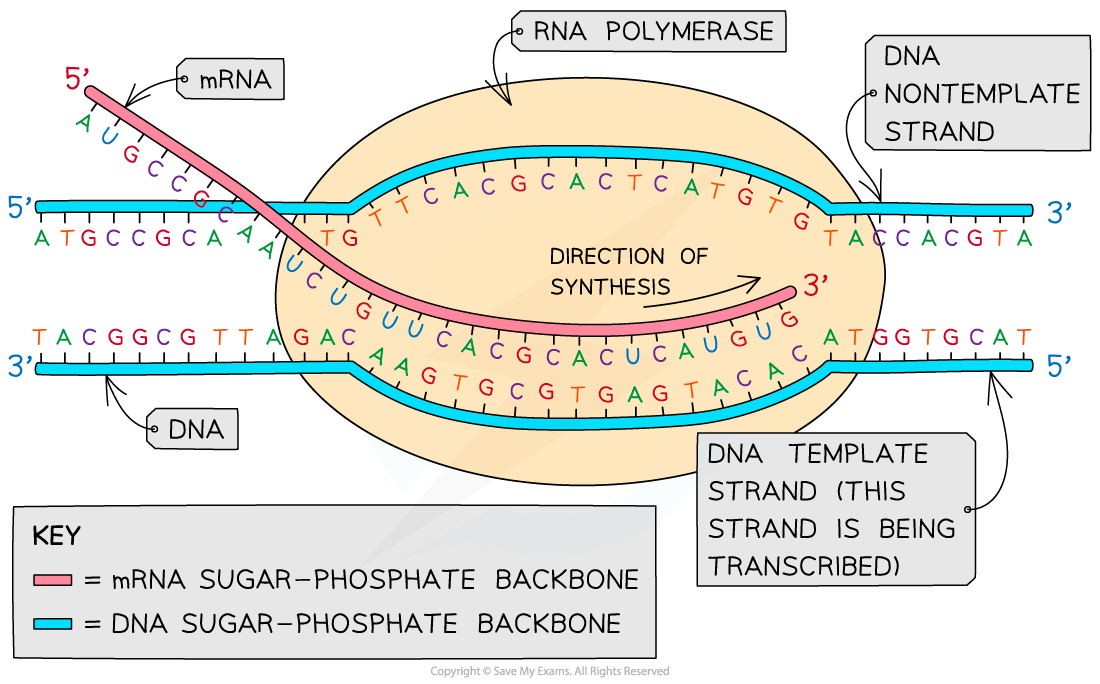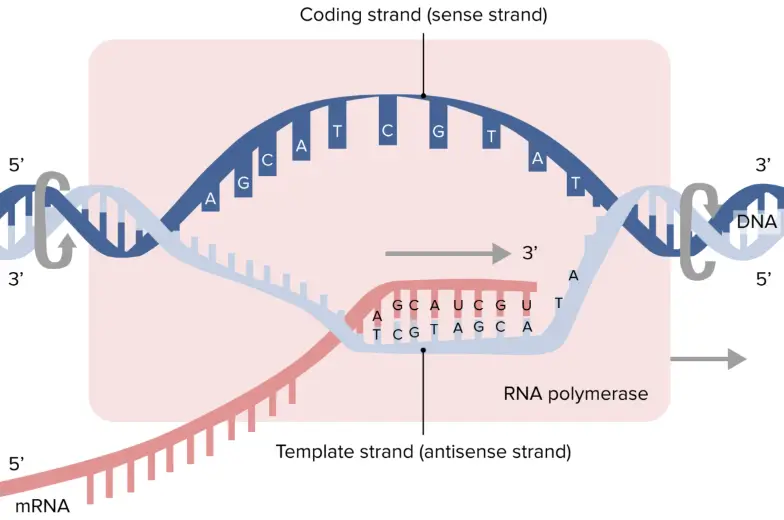What Is The Template Strand
What Is The Template Strand - One strand, the template strand, serves as a template for synthesis of a complementary rna transcript. Web the template strand, also referred to as the antisense strand or the minus strand, plays an. Web template strand ( plural template strands ) ( genetics) the noncoding strand of a dna molecule that is used as a template for rna synthesis. Which is one of strand in the dna that is present after they are being unwounded by the enzyme. The primary enzyme involved in this is dna polymerase which joins nucleotides to synthesize the new complementary strand. A template strand is the term that refers to the strand used by dna polymerase or rna polymerase to attach complementary bases during dna replication. Web the template strand is the one that rna polymerase uses as the basis to build the rna. New dna is made by enzymes called dna polymerases, which require a template and a primer (starter) and synthesize dna in the 5' to 3' direction. (genetics) the noncoding strand of a dna molecule that is used as a template for rna synthesis. The new strand will be.
PPT Chapter 11 Transcription PowerPoint Presentation, free download
The new strand will be. Web each strand then serves as a template for a new complementary strand to be created. The template strand is the complimentary copy of the mrna in its nucleotide base pair sequence. One strand, the template strand, serves as a template for synthesis of a complementary rna transcript. Web each strand in the double helix.
CIE A Level Biology复习笔记6.2.4 Transcription翰林国际教育
A molecule (as of dna) that serves as a pattern for the. The template strand is the complimentary copy of the mrna in its nucleotide base pair sequence. (genetics) the noncoding strand of a dna molecule that is used as a template for rna synthesis. This template strand is called the noncoding strand. New dna is made by enzymes called.
Answered Template strand New strand New strand… bartleby
Which is one of strand in the dna that is present after they are being unwounded by the enzyme. New dna is made by enzymes called dna polymerases, which require a template and a primer (starter) and synthesize dna in the 5' to 3' direction. The coding strand determines the correct nucleotide sequence of mrna. The new strand will be..
Coding Versus Template Strand
Web a template strand is the term that refers to the strand used by dna polymerase or rna polymerase to attach complementary bases during dna replication. The coding strand determines the correct nucleotide sequence of mrna. The new strand will be. The dna strand that would correspond to. The template strand is the complimentary copy of the mrna in its.
Dna Template Strand shatterlion.info
Web during dna replication, each of the two strands that make up the double helix serves as a template from which new strands are copied. Web the template strand, also referred to as the antisense strand or the minus strand, plays an. When referring to dna transcription, the coding strand (or informational strand ) is the dna strand whose base.
Difference between Sense Strand and Antisense Strand of DNA Dna
Web the template strand is always read in the 3’ → 5’ direction. Web during dna replication, each of the two strands that make up the double helix serves as a template from which new strands are copied. Web the template strand is the one that rna polymerase uses as the basis to build the rna. This template strand is.
Difference Between Template and Coding Strand
Web the template strand, also referred to as the antisense strand or the minus strand, plays an. When referring to dna transcription, the coding strand (or informational strand ) is the dna strand whose base sequence is identical to the base sequence of the rna transcript produced (although with thymine replaced by uracil). Web a template strand is the term.
DNA Transcription Steps and Mechanism • Microbe Online
[noun] a gauge, pattern, or mold (such as a thin plate or board) used as a guide to the form of a piece being made. Web the template strand, also referred to as the antisense strand or the minus strand, plays an. The template strand is the complimentary copy of the mrna in its nucleotide base pair sequence. Web during.
Template Strand Vs Coding Strand Understanding The Difference GRAPHICOLD
[noun] a gauge, pattern, or mold (such as a thin plate or board) used as a guide to the form of a piece being made. The other strand, the coding strand, is identical to the rna transcript in sequence, except that it has uracil (u) bases in place of thymine (t) bases. Web each strand in the double helix acts.
PPT DNA REPLICATION PowerPoint Presentation, free download ID1418059
Web a template strand is the term that refers to the strand used by dna polymerase or rna polymerase to attach complementary bases during dna replication. [noun] a gauge, pattern, or mold (such as a thin plate or board) used as a guide to the form of a piece being made. In transcription, a region of dna opens up. The.
Web during dna replication, each of the two strands that make up the double helix serves as a template from which new strands are copied. New dna is made by enzymes called dna polymerases, which require a template and a primer (starter) and synthesize dna in the 5' to 3' direction. The primary enzyme involved in this is dna polymerase which joins nucleotides to synthesize the new complementary strand. The new strand will be. In transcription, a region of dna opens up. A molecule (as of dna) that serves as a pattern for the. Web a template strand is the term that refers to the strand used by dna polymerase or rna polymerase to attach complementary bases during dna replication. Web each strand in the double helix acts as a template for synthesis of a new, complementary strand. The other strand, the coding strand, is identical to the rna transcript in sequence, except that it has uracil (u) bases in place of thymine (t) bases. Web the template strand is the one that rna polymerase uses as the basis to build the rna. When referring to dna transcription, the coding strand (or informational strand ) is the dna strand whose base sequence is identical to the base sequence of the rna transcript produced (although with thymine replaced by uracil). Web each strand then serves as a template for a new complementary strand to be created. This template strand is called the noncoding strand. Web the template strand is always read in the 3’ → 5’ direction. Web the template strand, also referred to as the antisense strand or the minus strand, plays an. Web template strand ( plural template strands ) ( genetics) the noncoding strand of a dna molecule that is used as a template for rna synthesis. (genetics) the noncoding strand of a dna molecule that is used as a template for rna synthesis. One strand, the template strand, serves as a template for synthesis of a complementary rna transcript. Web template definition, a pattern, mold, or the like, usually consisting of a thin plate of wood or metal, serving as a gauge or guide in mechanical work. The coding strand determines the correct nucleotide sequence of mrna.









